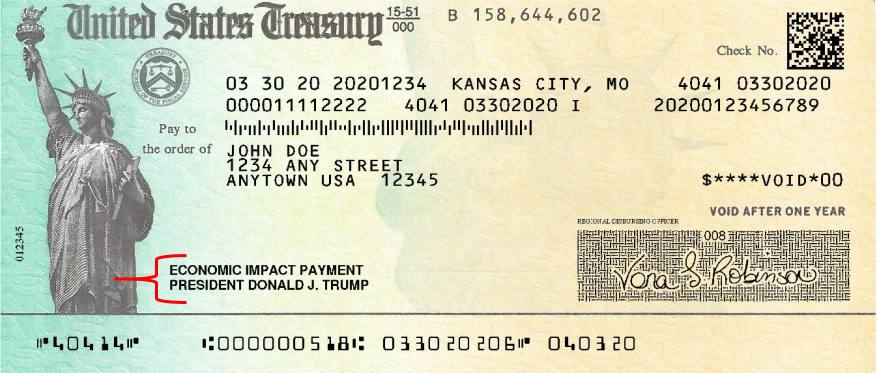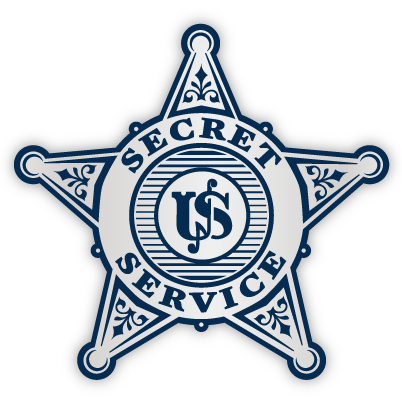
Economic Impact Payment Specimen: The Economic Impact Payment checks will have the following information located on the lower right side of the Statue of Liberty: ECONOMIC IMPACT PAYMENT PRESIDENT DONALD J. TRUMP.
WASHINGTON - The Secret Service in partnership with the U.S. Department of the Treasury is leading the charge to bring awareness to citizens, retailers and financial institutions on how to protect themselves from becoming a victim of easy to detect counterfeit U.S. Treasury Checks. According to the Internal Revenue Service (IRS), paper U.S. Treasury checks from the $2 trillion dollar Coronavirus Aid, Relief and Economic Security Act (CARES Act) will be mailed and issued to millions of Americans beginning late April, 2020. With the implementation of the CARES Act, comes opportunities for criminal activity, like check fraud.
The Secret Service and the U.S. Department of the Treasury want to inform citizens and consumers nationwide on ways to protect themselves during these times. This announcement contains information that consumers and financial institutions can use to identify counterfeit U.S Treasury checks by knowing what to look for and where to look.
Quick Tips / Genuine Security Features:
- Treasury Seal – A new seal to the right of the Statue of Liberty. It should say “Bureau of the Fiscal Service,” and has replaced the old seal that said “Financial Management Service.”
- Bleeding Ink – the seal to the right of the Statue of Liberty when moisture is applied to the black ink will “run” and turn red.
- Watermark – All U.S. Treasury checks are printed on watermark paper. The watermark reads “U.S. TREASURY,” and is seen from both front and back when held up to a light source.
- Ultraviolet Overprinting – A protective ultraviolet (UV) pattern is invisible to the naked eye, consisting of lines of “FMS” bracketed by the FMS seal on the left and the U.S. Seal (eagle) on the right. As of 2013, a new ultraviolet patter was introduced into the check that says “FISCALSERVICE”. Either one of these UV patterns maybe be seen.
- Microprinting – is located on the back of the check with the words “USAUSAUSA.”
- Economic Impact Payment: The Economic Impact Payment checks will have the following information located on the lower right side of the Statue of Liberty: “Economic Impact Payment President Donald J. Trump.”
We at the Secret Service and the U.S. Department of the Treasury are working with our law enforcement partners to ensure a unity of effort to disrupt and deter criminal activity that could hinder an effective response to the pandemic, to help vulnerable organizations, and to recover money stolen from Americans. For more information or to report a COVID-19 related scam, please contact your local law enforcement agency, a Secret Service Field Office, the U.S. Department of the Treasury, Office of Inspector General, the U.S. Treasury Inspector General for Tax Administration at tips.TIGTA.gov, the Internet Crime Complaint Center at www.ic3.gov, the National Center for Disaster Fraud (NCDF), Internal Revenue Service (IRS) and the Federal Trade Commission (FTC).
To learn more about the security features that can be found on U.S Treasury Checks, visit the official guide on the U.S. Treasury website.

